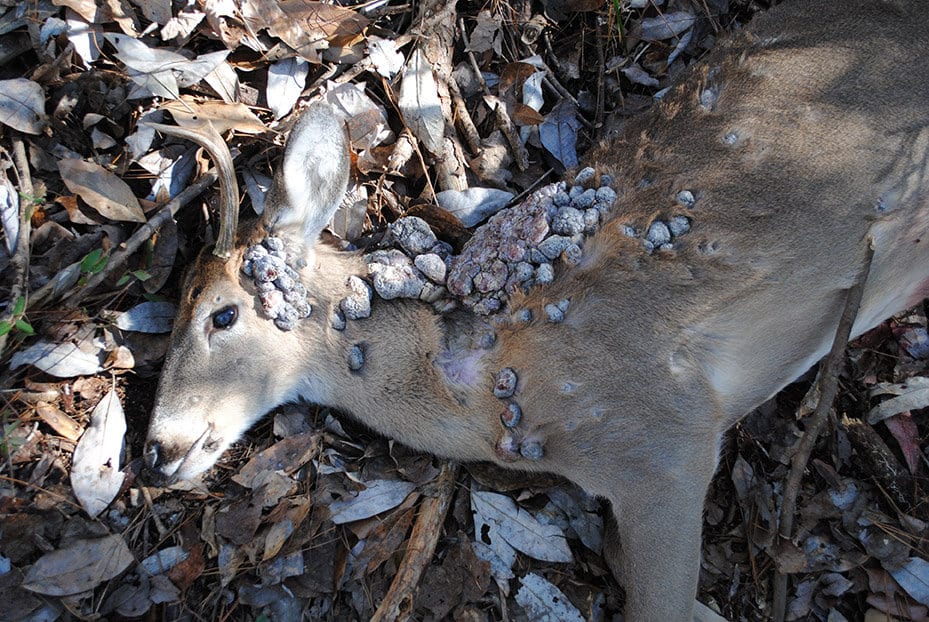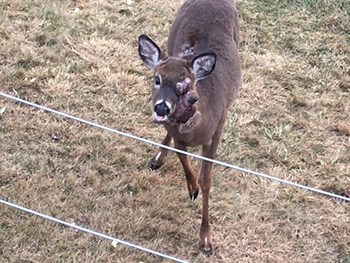Deer warts, even just one viewed with the naked eye, binoculars, or scope, are a game changer. Deer warts are repulsive. In the wake of Covid, Epizootic hemorrhagic disease (EHD), and Chronic Wasting Disease (CWD), they are the last thing a deer hunter wants to see, especially after harvesting a deer.
This article won’t change your mind. No matter what anyone tells you, you won’t field-dress a deer with warts, let alone butcher and eat it. You have an innate taboo against eating any animal that appears or acts sick. And a deer with warts is something you don’t want to touch, let alone eat with a fork.

What are deer warts?
Deer warts are usually harmless cutaneous fibromas caused by an infection. They are fleshy, hairless, gray, or dark growths with a cauliflower-like appearance. Large warts dangle from the deer by a slender attachment to the skin. Most warts lose their blood supply and detach during the winter.
If you have read anything about deer warts, it was, ”they are harmless to humans.” To an extent, that is true. However, scientists are not quite sure how the virus involved is transmitted. Some researchers believe insect bites are responsible. Others think direct contact between deer or from shared surfaces spreads deer warts.
So, are deer warts harmful to people? Yes, if warts develop a secondary infection, that infection could be hazardous to humans. Now, you could check your deer for open, running infections and avoid eating it—or just let it walk right past you.
Related: The three best deer hunting calibers.

Are deer warts harmful to deer?
Deer warts are usually harmless to deer unless the growths interfere with their vision, breathing, eating, or ability to travel. The warts are only skin deep and do not involve the muscles. If you skin a deer with warts, there will be no evidence on the carcass of their ever having been there.
For many deer, warts will only last a few months. At a certain size, warts outgrow their blood supply and fall off. Deer that survive the virus and who’ve tumors have healed now have life-long immunity against further infection.
Related: The best hours of the day to hunt deer.
What should deer hunters do with deer with warts?
For most deer, deer warts might just help them make it through the open season. Even if a single wart is seen, it may be grotesque and repulsive enough to earn that deer a pass by your average deer hunter.
Even if you spy a trophy buck with deer warts, soothe yourself with this thought, ”no one will take him, and next year he will be healthy again.”
Related: Deer feed and baiting deer.

Can you kill a deer that is suffering from deer warts?
Yes, in some states, the law allows you to put crippled or helpless wildlife down when you do it for humane purposes. But where it is permitted, the act must be reported. The best advice is always to contact your local game warden and report a deer in obvious distress from deer warts.
Got a lot of respect and confidence in your local game warden? Willing to take your chances that the officer will see the same suffering you did? Remember, your money, liberty, gun rights, and hunting privileges are at stake here.

